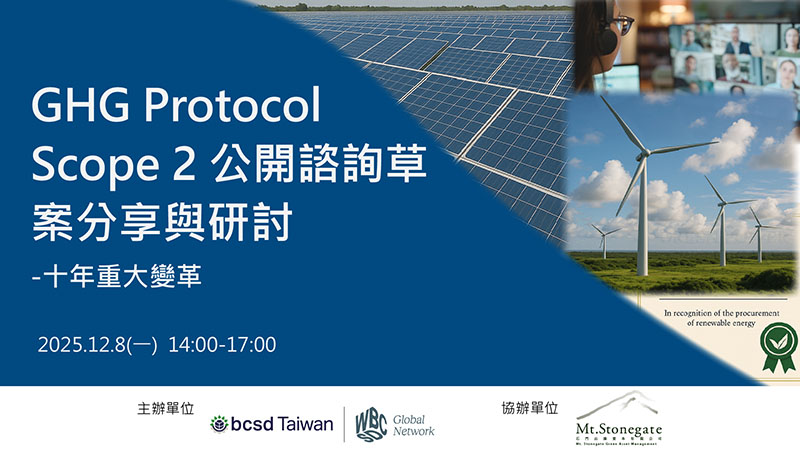Business Perspective on Greenhouse Gas (GHG) Inventory | White Paper
- Feb 17, 2022
- 3 min read
Updated: Aug 1, 2022

Greenhouse Gas (GHG) Protocol
The Greenhouse Gas Protocol provides a comprehensive and standardized framework for emissions accounting, reporting throughout corporate value chains . It is a global initiative developed by the World Resources Institute (WRI), World Business Council for Sustainable Development (WBCSD) and other organizations, in partnership with businesses, non-governmental organizations (NGOs) as well as governments. More than ninety percent of Fortune 500 companies have reported in CDP using the guidelines set out in the GHG Protocol.[1]
Importance of GHG Inventory in the business
United Nations Framework Convention on Climate Change (UNFCC) emphasizes the importance of preventing catastrophic events by means of stabilizing GHG level in the atmosphere.[2] Thus, quantifying GHG emissions is crucial in attaining this objective to manage GHG risks. Currently, various governments have implemented national policies in regard to GHG emissions reduction, this includes: introduction of emissions trading programs, voluntary offset programs, and carbon or energy taxes that may directly or indirectly impact businesses' portfolios.
GHG Inventory Development
In recent years, businesses have advanced their corporate goals by committing to more stringent climate targets such as Science-based targets and net-zero - GHG accounting is a bridge to attaining these goals [3]. There are three main values in GHG accounting:
1. Manage GHG risks and identify reduction opportunities
2. Public reporting and transparency to stakeholders
3. Recognition for early voluntary action.
4. Visibility into the progress of emission reduction targets
According to GHG protocol, businesses need to determine their emissions accounting boundaries. Thus, the initial step of recording GHG inventory is to specify the base year and corporate activities that will be accounted for. GHG Protocol categorizes the emissions into three scopes:
· Scope 1: Direct GHG emissions from the activities owned by the organization.
· Scope 2:Indirect GHG emissions from purchased electricity, steam, heating, and cooling consumed.
· Scope 3: Other indirect GHG emissions include business travel, waste, and water.

Figure 1. Overview of GHG Protocol scopes and emissions across the value chain [1]
The documentation of GHGs inventory needs to be third-party verified, and companies will be able to set a GHG reduction goal according to their preference. Recently, majority of the companies report scope 2 into two methods: location-based and market-based.
· Location-based reflects the average emissions intensity of grids on which energy consumption occurs.
· Market-based reflects the emissions from electricity that companies intentionally chosen.
For instance, if the goal is set to focus on market-based emissions, contractual instruments such as Renewable Energy Certificates (RECs) can be used to reduce the reported companies' scope two emissions. (RECs are tradable, which constitutes the environmental attributes of generating a one-megawatt hour (MWh) of renewable energy generation on the electricity grid.) Meanwhile, if the goal is to focus on location-based emissions, construction of on-site renewable power generation can improve operational efficiency, decreasing costs . GHG accounting provides data to track the progress in fulfilling these reduction goals.

Companies integrating GHG Inventory
Increasingly, companies are starting to commit to various climate initiatives such as the RE100, which drives the growth of environmental disclosures through CDP— a non-profit organization that administers the assessment of ecological impacts. [4] This disclosure practice is significant in attaining good Corporate Social Responsibility (CSR) or Environmental, Social, and Governance (ESG) reports. As the growth of companies adds climate change targets internally, the demand for GHG inventory also increases since GHG inventory is the quantification of emissions, identifying emission reduction goals.
For instance, Apple pledged to be carbon-neutral across its entire operations, including manufacturing supply chain and product life cycle by 2030, whereas their suppliers shall commit to GHG emissions management. This further encourages their suppliers to transition to renewable energy to adhere to Apple’s target on cutting carbon emissions. As another example, following the SBTi assessment, H&M plans to diversify its renewable energy portfolio through Power Purchase Agreement (PPA) to reduce its scope 2 and 3 emissions.
The role of Mt.Stonegate
Mt.Stonegate Asset Management Ltd., provides a one-stop service that supports companies in achieving their climate initiatives through high-quality GHG inventory management, offset programs and renewables procurement verified by third party. We also offer corporate trainings to keep your decision maker up to date on the most recent CSR/ESG related topics, and build a bridge for cross-functional collaboration. Our affiliate Nanjitan, works with carbon credits development and carbon trading.
For more information on GHG accounting or navigating opportunities in climate initiatives, reach us at www.mtstonegate.com/contact.
[1] https://ghgprotocol.org/ [2] https://unfccc.int/process/transparency-and-reporting/greenhouse-gas-data/what-is-greenhouse-gas-data [3] https://ghgprotocol.org/corporate-standard
[4] https://www.cdp.net/en/info/about-us




Comments